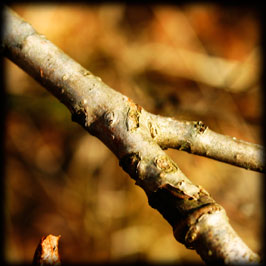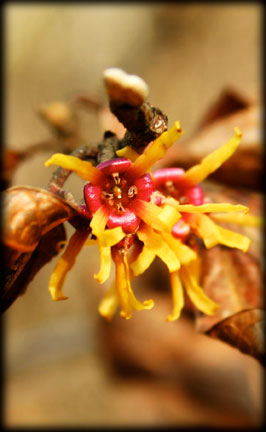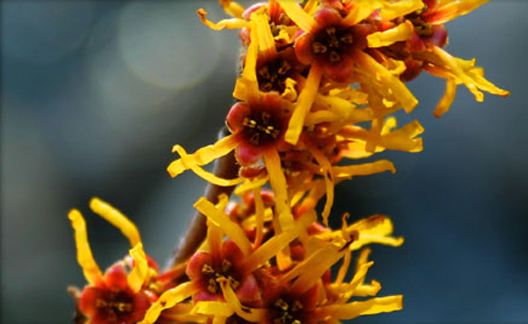Witch Hazel
by Joshua Heston
The sun is setting, nearly behind the ridge.
The creek, cold and surprisingly deep, is speaking softly, playing around amid the rocks.
There is a chill in the air.
It is February in the Ozarks.
Spring is just around the corner. Right in front of you.
Do you see it?
The unprepossessing shrub hanging over the creek?
Its leaves are brown and crumpled. The branches looking surprisingly like hazel brush.
And there, tiny, strange blossoms smaller than your thumbnail. It is the herald of the Ozarks spring.
Witch hazel...
February 20, 2010
Witch Hazel (Hamamelis virginiana)
Size: 5 to 15 feet tall; leaves 4 to 6 inches long. What to look for: leaves asymetrical at base, with coarse, rounded teeth; flowers yellow, clustered, with narrow, twisted petals (late fall [in northern climates]).. Habitat: bottomlands, forests, streambanks.
— page 323, Wernett, Susan J., et al. North American Wildlife. The Reader's Digest Association, Inc., 1986.
The Ozark Witch Hazel
(Hamamelis virginiana)
— contributed by Denise Hansson
Unknown to many, there are three native Witch-hazel species, Hamamelis virginiana, H. vernalis, and H. ovalis. The more well-known Hamamelis virginiana (found growing from Maine to Florida and west to the Great Plains) blooms in the fall, notable for its yellow blossoms.
The Mohegans are credited with introducing H. virginiana’s medicinal qualities to the European settlers. The beautiful and rare Hamamelis virginiana is also known as the Ozark Witch-hazel.
Ozark Witch-hazel blooms in late winter and early spring (hence the name vernalis) and is found only in the wild in Ozark river valleys. Flower color ranges from yellow to orange and even red. It is the Witch-hazel pictured on this page.
There is some controversy over which species the Osage used medicinally (H. virginiana also grows in the Ozarks).
Rutgers Master Gardener / Rutgers Cooperative Extension, New Jersey
Plate 1.

Plate 2.

Plate 3.

Plate 4.




